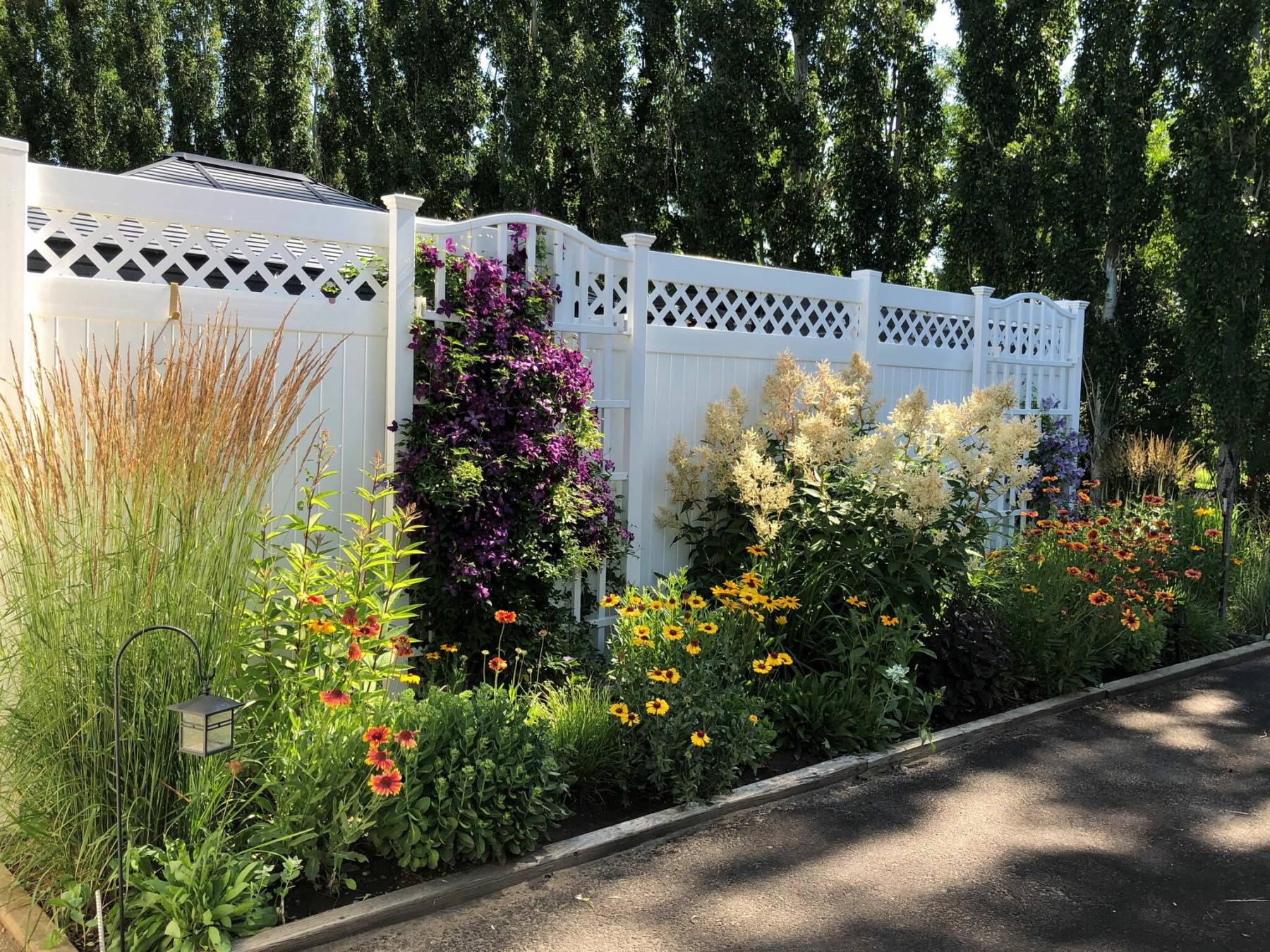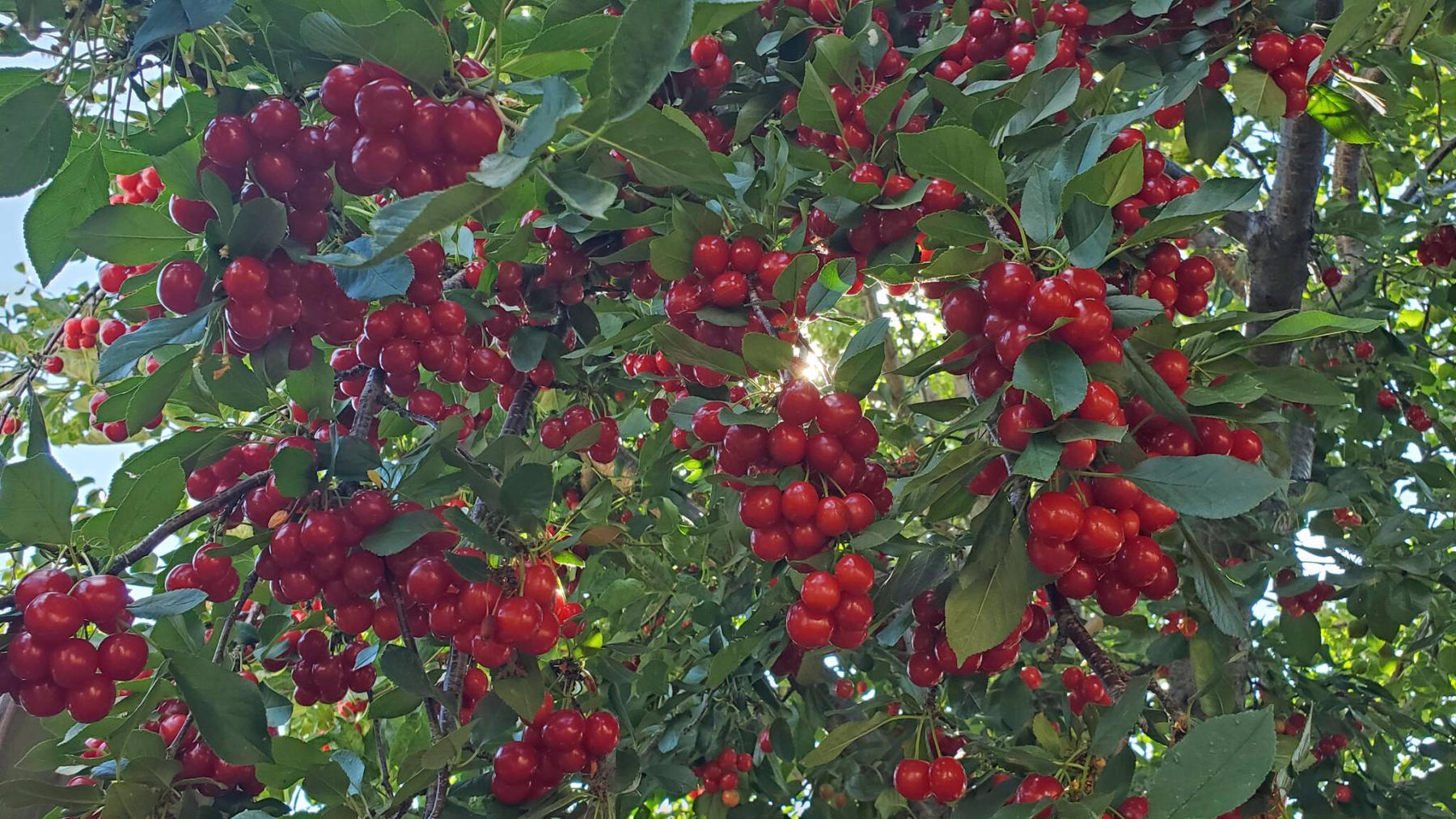
Brent Smith
There are some benefits of a warmer climate: bountiful cherries and more diverse fruit crops.
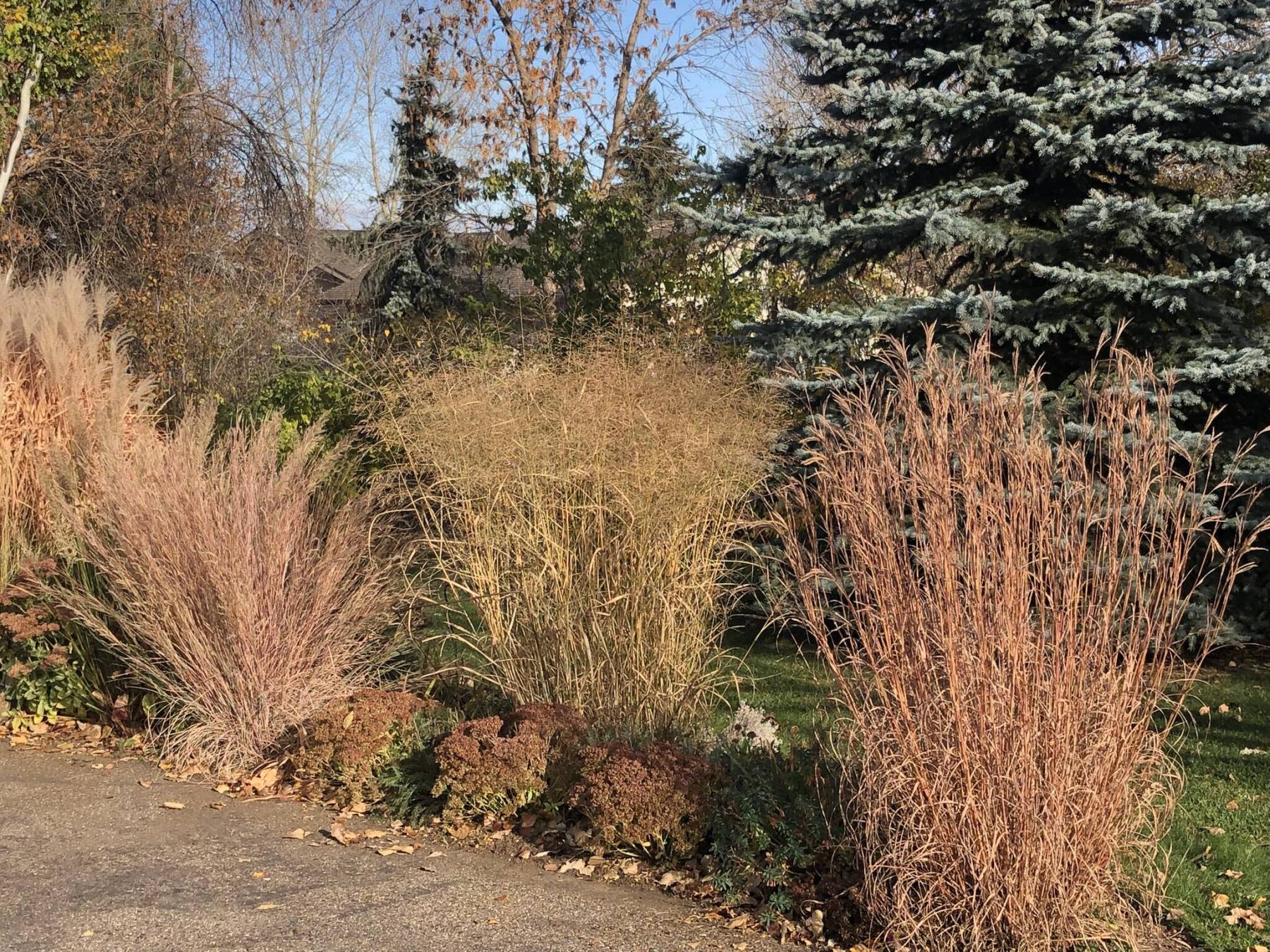
Marilyn Kusler
Ornamental grasses are ideal for hot, dry gardens. Left to right: Miscanthus Flame Grass, Little Bluestem, Northwind switch grass, and Big Bluestem Rain Dance.
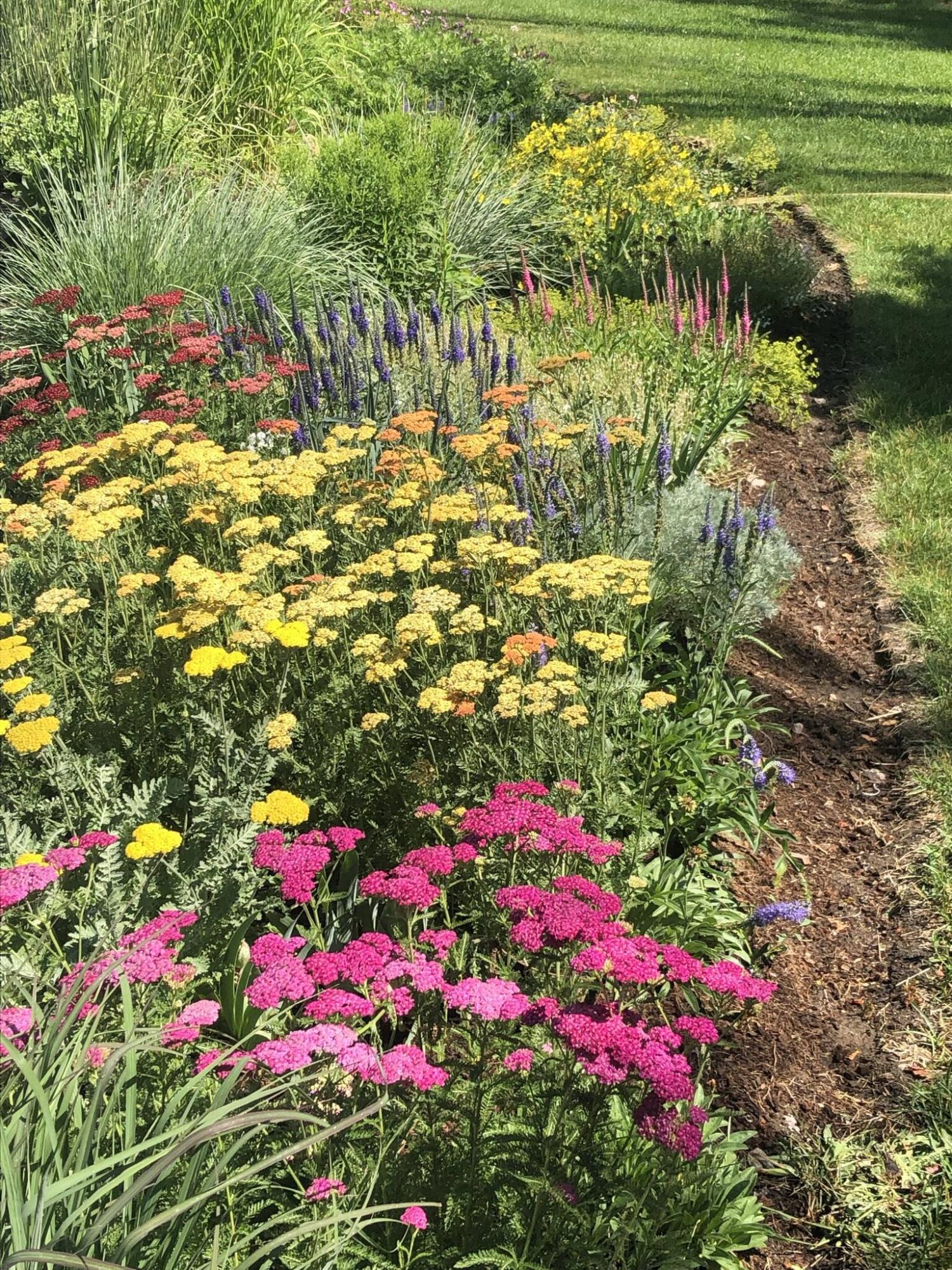
Marilyn Kusler
Yarrow, Veronica speedwell, and blue oat grass are a water-wise combination in Medicine Hat’s hot, dry summers.
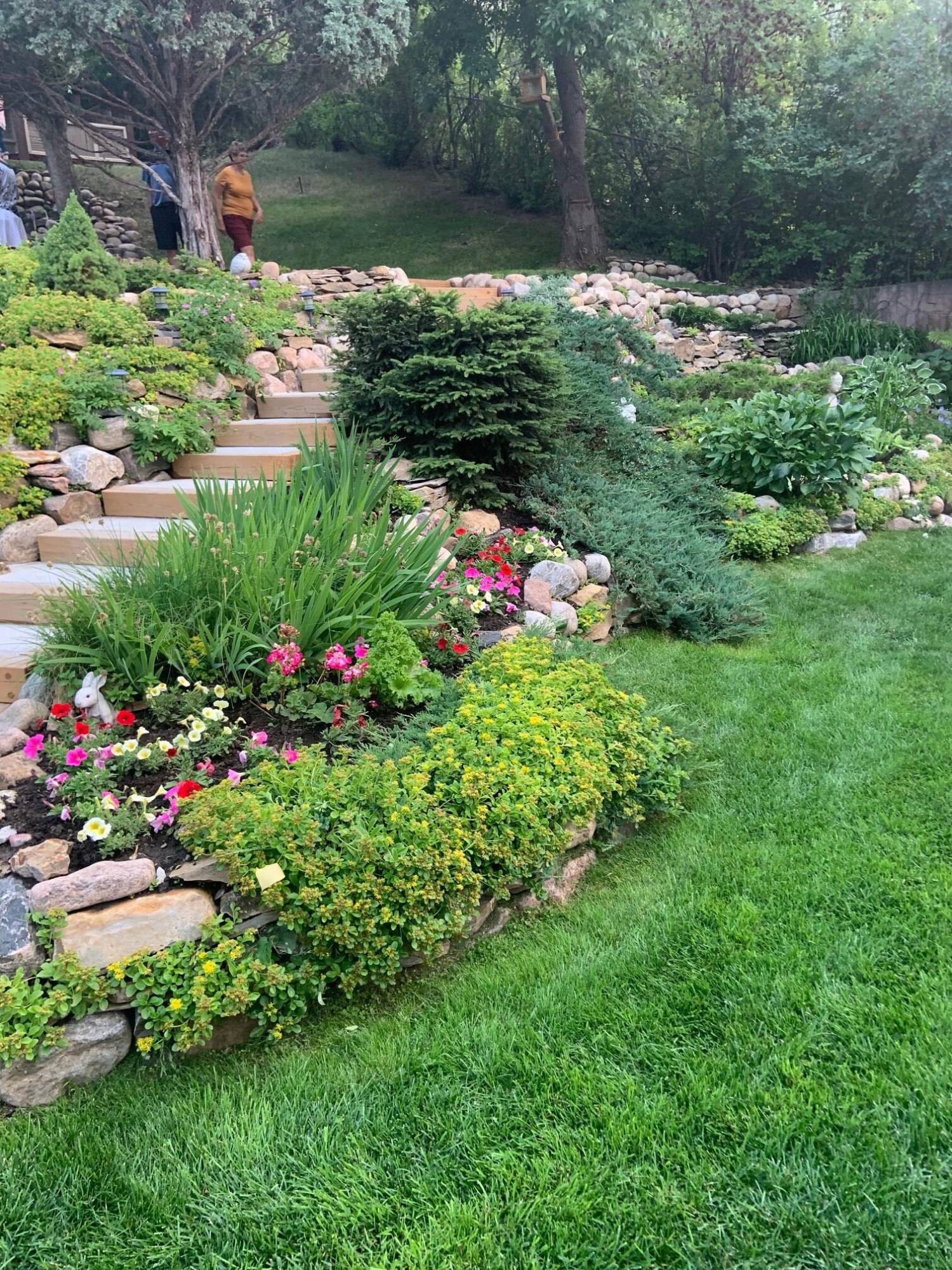
Marilyn Kusler
For Medicine Hat gardeners, there are more plant possibilities if attention is paid to water conservation and annual soil amendments.
There is a new climate normal for all prairie gardeners and an overriding need to adapt our gardens. Which plants should we be growing that will thrive in the hotter, drier summers we are all experiencing? We have an opportunity to learn from one another. A good place to start is Medicine Hat.
Mel Deydey, newsletter editor for the Medicine Hat and District Horticultural Association, recently told me that Medicine Hat struggled this summer with virtually no rain and an abundance of extremely hot weather that began in May with consecutive days of 30 C.
“Fall is not shaping up to be any better moisture wise. We are still very dry,” he said.
I also talked with Marilyn Kusler, vice-president of the Medicine Hat Horticultural Association.
“We live with drought-like conditions constantly,” said Kusler. “Medicine Hat is in the South Saskatchewan River Valley in southeastern Alberta. We are semi-arid,” said Kusler. “I always look at Winnipeg’s weather and I’m jealous in the sense that when it snows in Winnipeg, it stays there, and snow is insulating. We get snow in Medicine Hat, but a lot of times wind blows it away or we get a chinook that melts it away and then everything is exposed again. So the plants in our gardens and landscapes have to be tough and drought tolerant.”
Kusler grows several peonies which are drought tolerant once they are established. She also grows Baptisia false indigo which has a deep taproot and is tolerant of poor soils. She grows varieties that have different flower colours such as blue-flowered Baptisia australis false indigo which is native to the North American Prairies as well as Purple Smoke false indigo which has smoky purple flowers with a violet eye. “Baptisia plants are slow growers,” said Kusler. “They take a few years to get going and then they just keep getting bigger and bigger. They are long-lived like peonies and once they are planted, they do not like to be moved.”
Other drought-tolerant plants that Kusler grows include Veronica speedwell, rudbeckia, salvia, ornamental grasses, Russian sage, false sunflower, Siberian iris, clematis, yarrow, goldenrod, sedum, and much more. Kusler is very fond of growing irises but has the most success with dwarf varieties. Newer introductions of Tall Bearded irises pose the greatest challenge, she said, because of her area’s lack of reliable snow cover and freeze-thaw cycles.
Ornamental grasses are ideal for hot, dry gardens. Kusler grows several varieties. One of her favourite grasses is Miscanthus sinensis Flame Grass with showy silver plumes and bronze-orange leaves. She also grows Little Bluestem, Big Bluestem Rain Dance, Northwind switch grass, Karl Foerster feather reed grass, El Dorado feather reed grass, blue oat grass, and Molinia variegated moor grass. She plants sweeps of grasses or combines them with flowering perennials in mixed borders.
The website for the City of Medicine Hat lists the plant hardiness zone as 4b. But Kusler and Deydey believe that their plant hardiness zone is more accurately between Zone 3 and Zone 4. “Zone 4 plants may or may not survive here or may be very short-lived. In Winnipeg’s cold climate, plants that are hardy to Zone 3 or Zone 3b also have the greatest chance of winter survival. Despite that similarity, Medicine Hat’s brown soils differ significantly from Winnipeg’s black soils.
“My soil is almost pure sand,” said Kusler. I can water my garden with an inch of water and work in it immediately after, that’s how fast the water drains. It does not puddle, it does not percolate slowly, it just disappears.” Kusler’s property is situated alongside a creek which she uses for irrigation. “So I have a good water source and I’m not paying for it but I pay through my electric bill for the cost of pumping water.” She mulches all her plants and amends her soil annually with additions of organic matter such as compost. “I leave most of my plants standing for the winter so that they can trap any snow that we receive. It’s more work in the spring but it’s better for my garden. I also leave places where leaves can gather for overwintering insects.”
Kusler harvests rainwater from her roof and stores it in four water barrels. She grows vegetables in cedar raised beds that were built some years ago. In hindsight, she wishes that she had lined the raised beds to prevent water from wicking out through the side walls. “The wood is exposed to our heat and sun and wind so if I had lined the inside walls with plastic, that would have helped to hold more moisture inside.”
Medicine Hat has a large population of deer. To deter the deer from eating her vegetables, Kusler purchased hail netting which she stretched over the hoops on her raised beds and discovered an added benefit – the netting provided light shading for her food crops and protected them from blistering sun.
Kusler is hoping to learn more about water conservation and managing landscapes in hotter, dry conditions from an urban tree study that is currently being conducted by Brent Smith, an instructor at Medicine Hat College. “We were fortunate last year to have Brent Smith’s garden on our garden tour last year,” said Kusler. It was a chance to see his many innovative strategies for water storage and the diversity of food crops that he grows.
Smith’s background is in ecology. The urban tree study that he is coordinating is looking at, among other things, how to make soil more moisture retentive. Once available, the results of the study will be posted on the college’s website (mhc.ab.ca).
“One of the most important tools I use is a website called climateatlas.ca which shows maps, graphics, and statistics about weather, temperature, and precipitation across the prairie provinces,” said Smith in a phone conversation last week. The database was produced at the University of Winnipeg’s Prairie Climate Centre. Smith said that the prediction for Medicine Hat for the period 2020 to 2050 is for 40 to 45 days of temperatures that are warmer than 30 C during the summer. “In 2021, we already surpassed that,” he said.
“Medicine Hat’s climate is very different from Winnipeg’s,” said Smith. “Our normal plant communities are grasslands. It’s only in areas where there is extra water — riparian areas — that we have enough water to grow trees. In essence, Medicine Hat is a desert and it’s going to get drier. But there are also some benefits of a warmer climate.” Smith said he is happy to take risks, and grows cherries, nectarines, kiwis, grapes, pears and pawpaw fruit in his home garden. He harvests rainwater from his roof to reduce the need for irrigated water. “Things are going to get drier but our growing zones are also going to expand so if we adapt our landscapes, especially our water usage, it will be an opportunity to grow new and unique things.”
colleenizacharias@gmail.com
For advice, ideas and tips to keep your outdoor and indoor plants growing, sign up to receive Winnipeg Gardener, a free monthly digital newsletter I write for the Winnipeg Free Press at https://www.winnipegfreepress.com/newsletter/winnipeg-gardener

